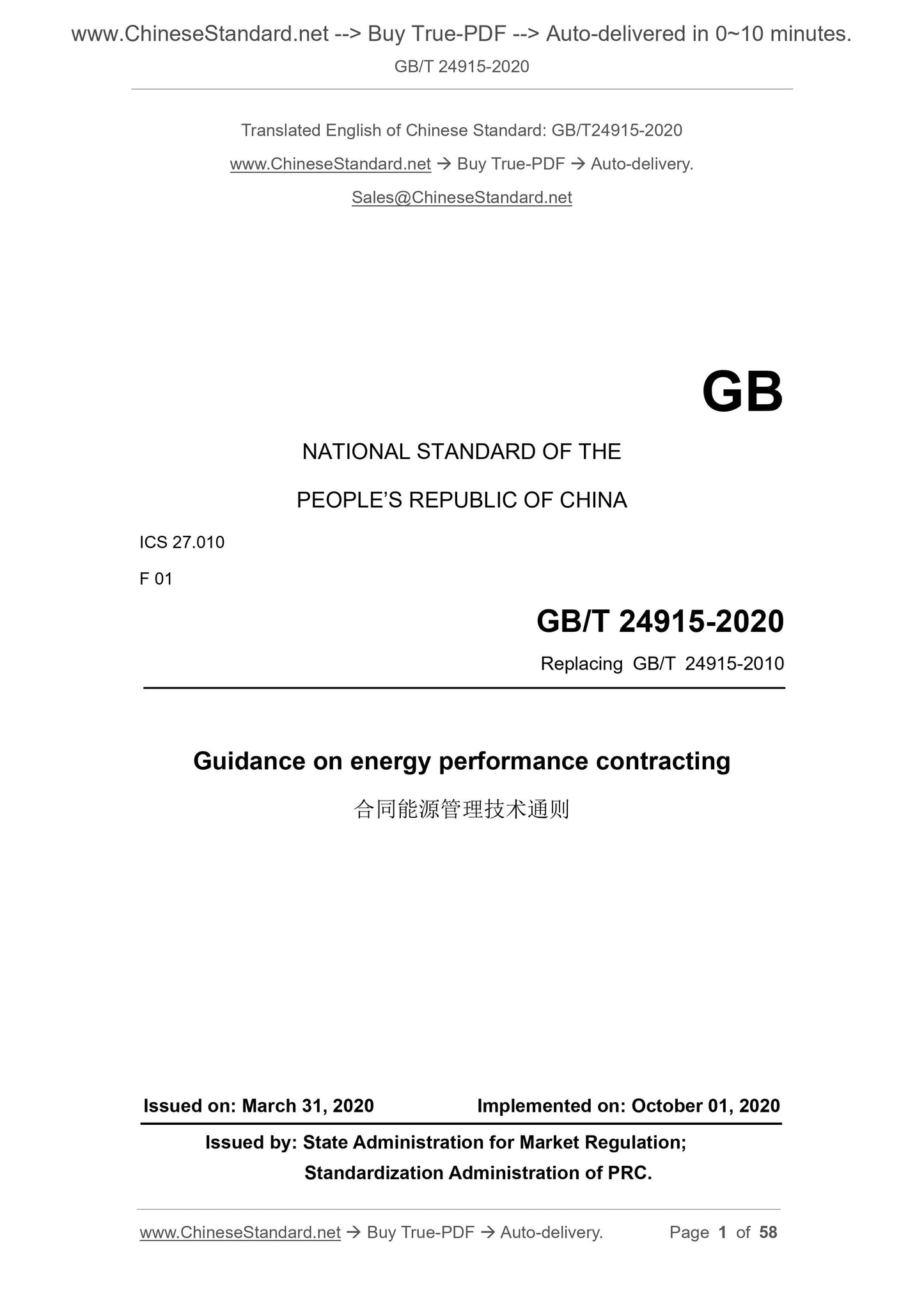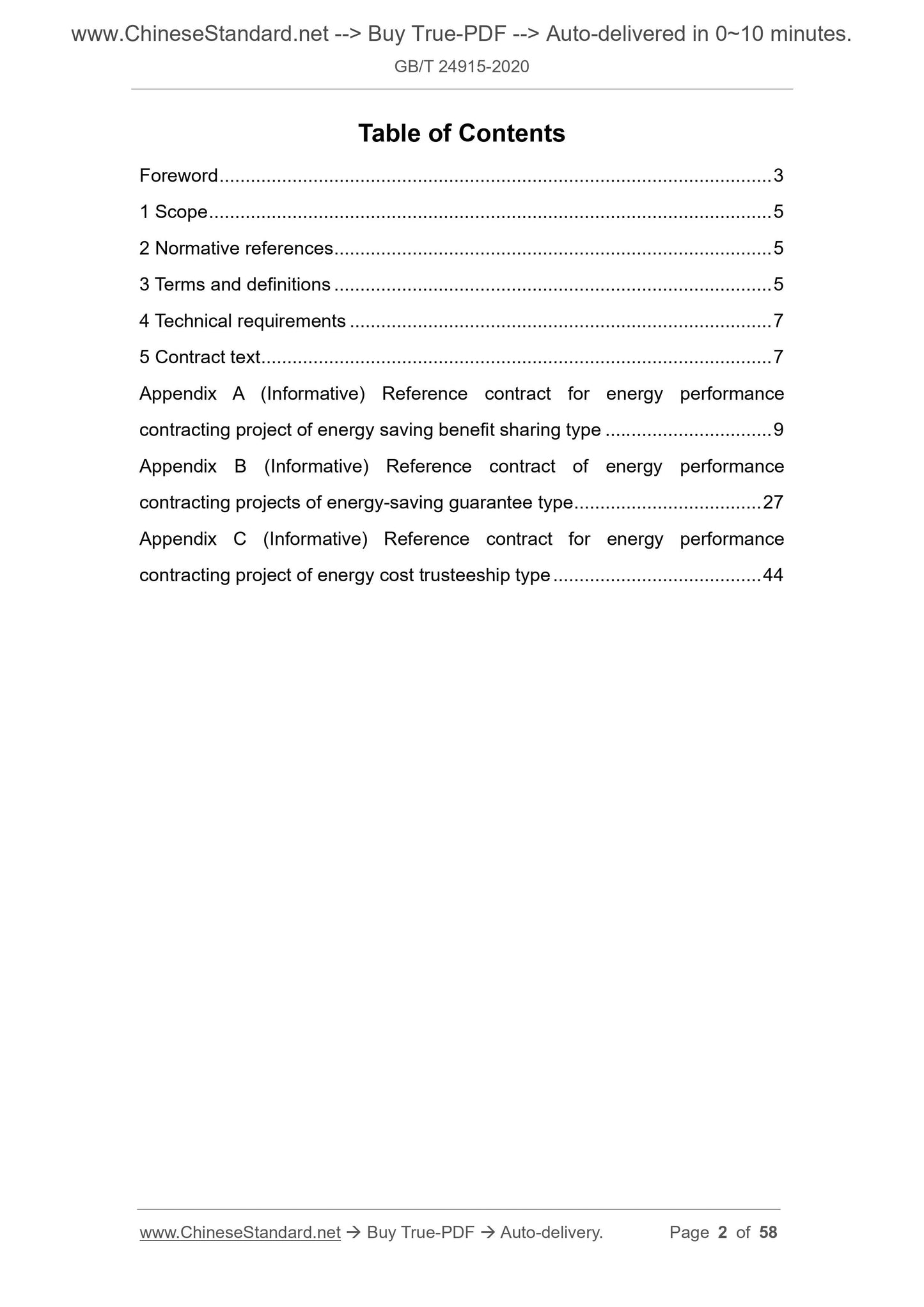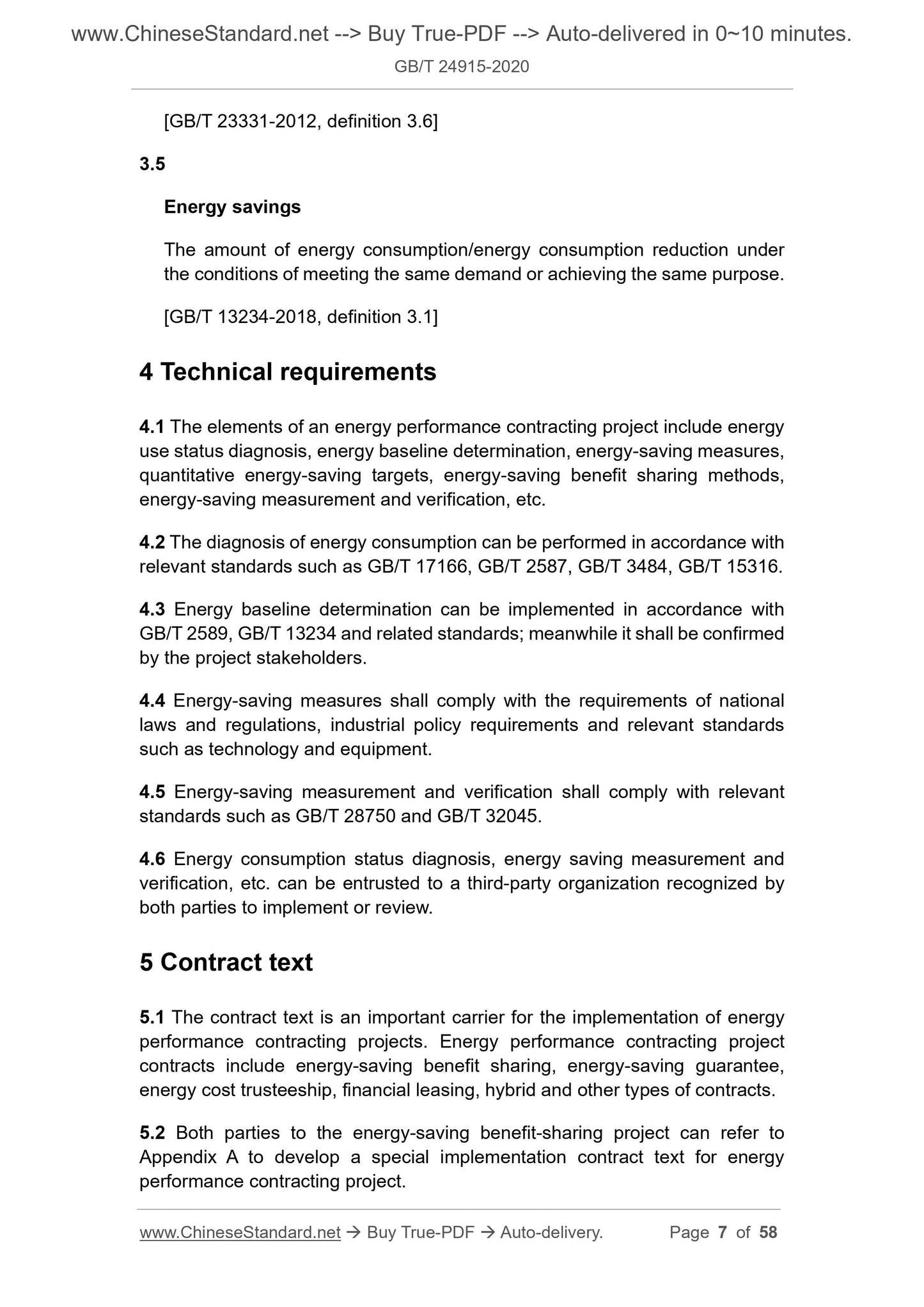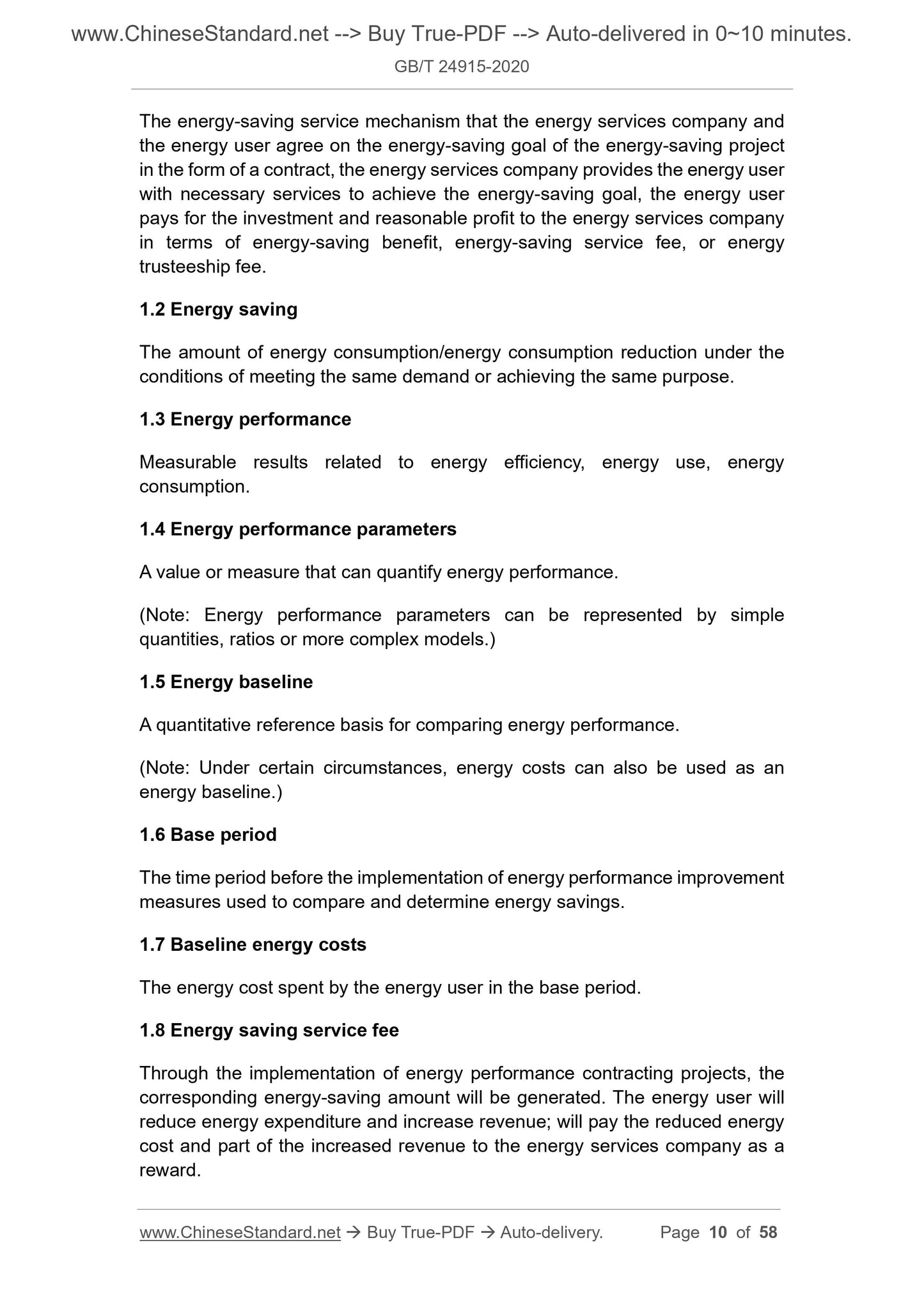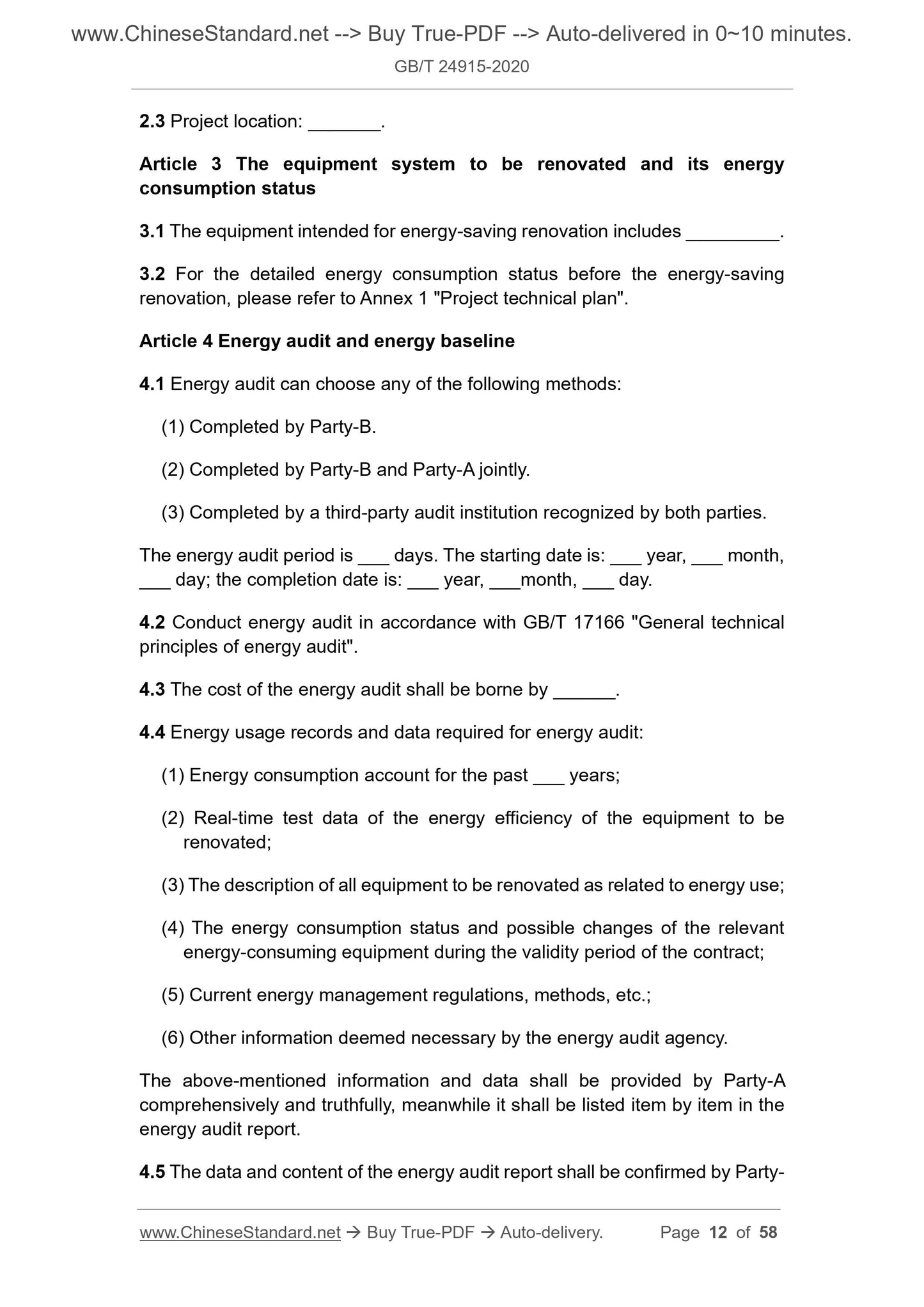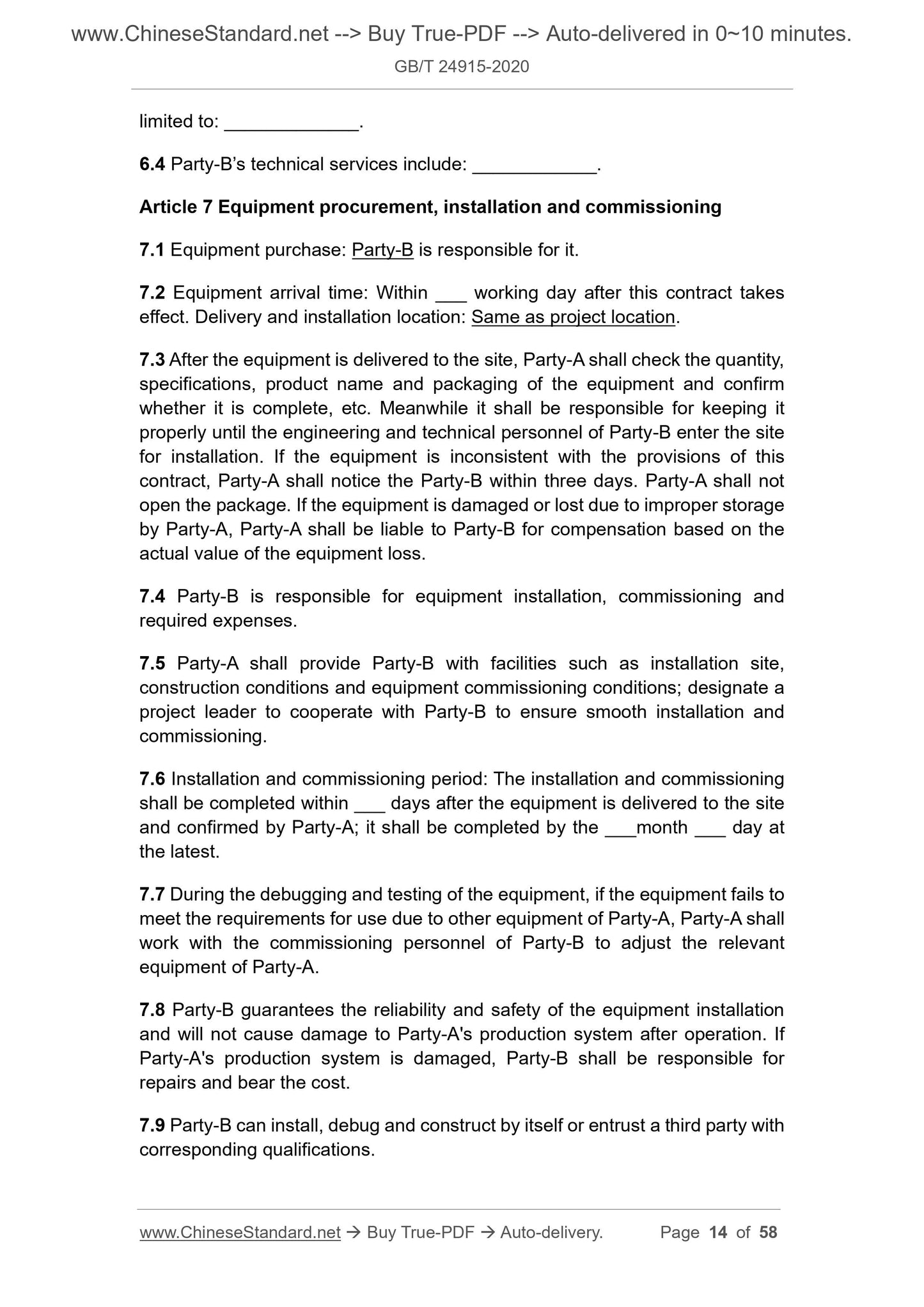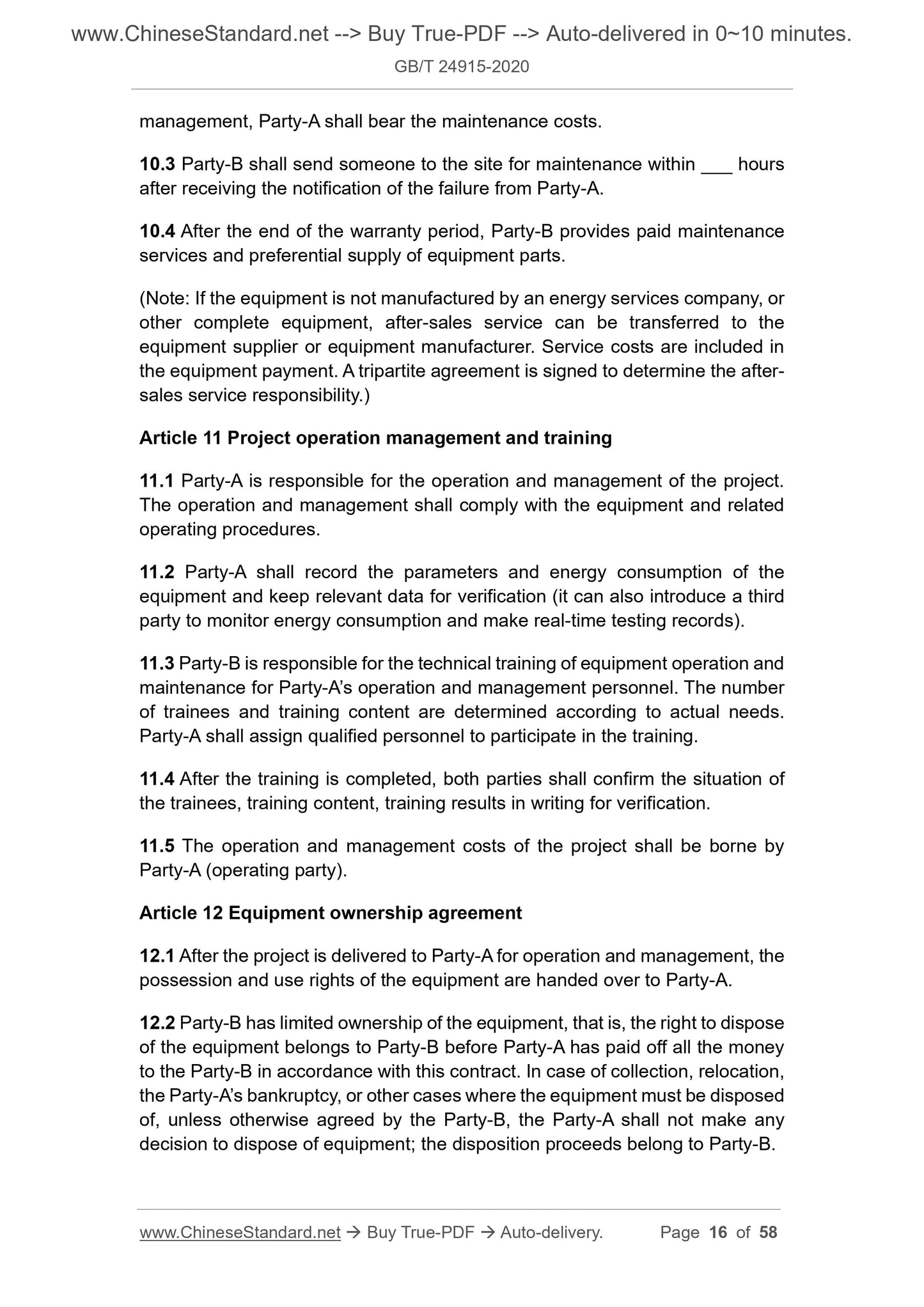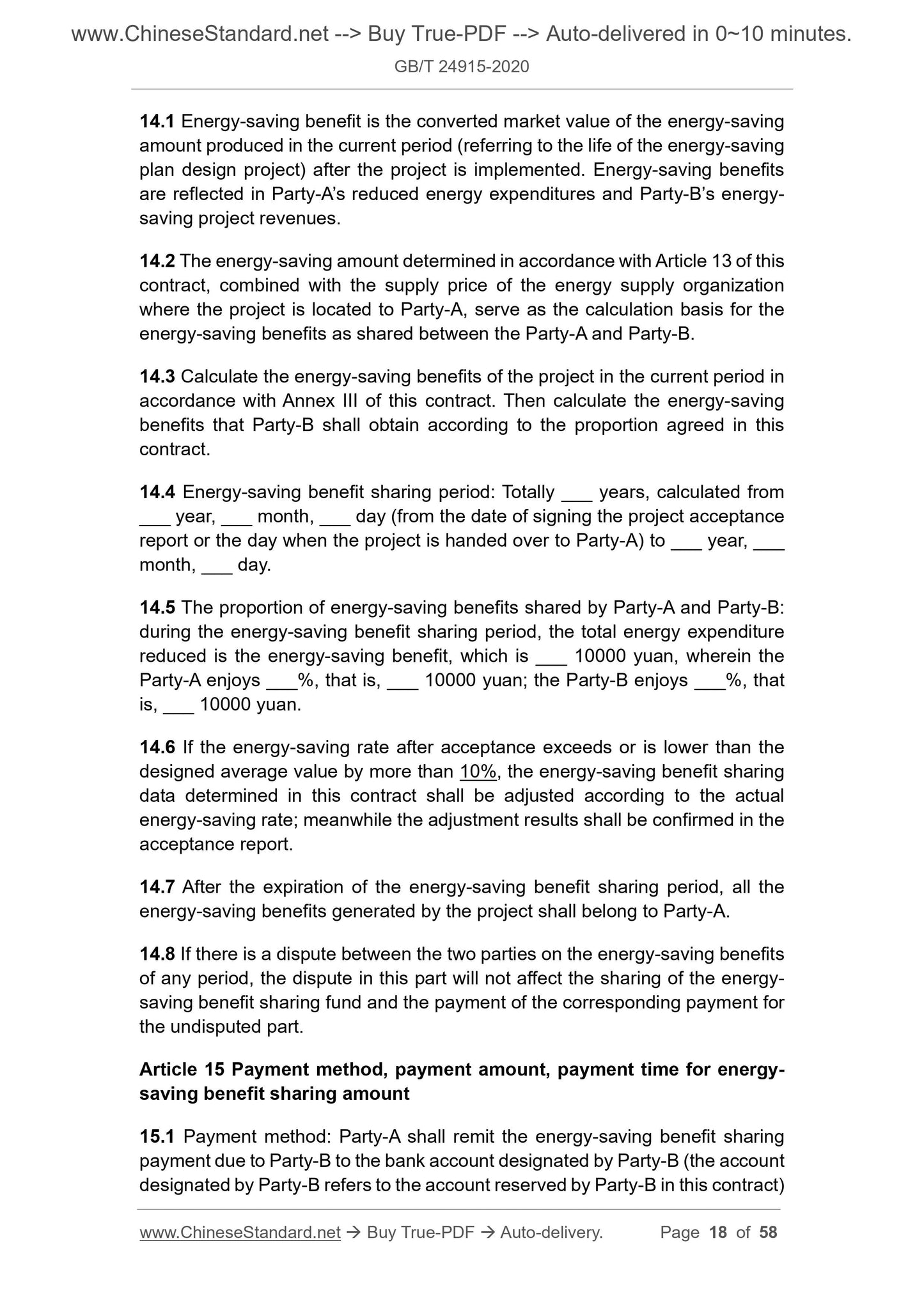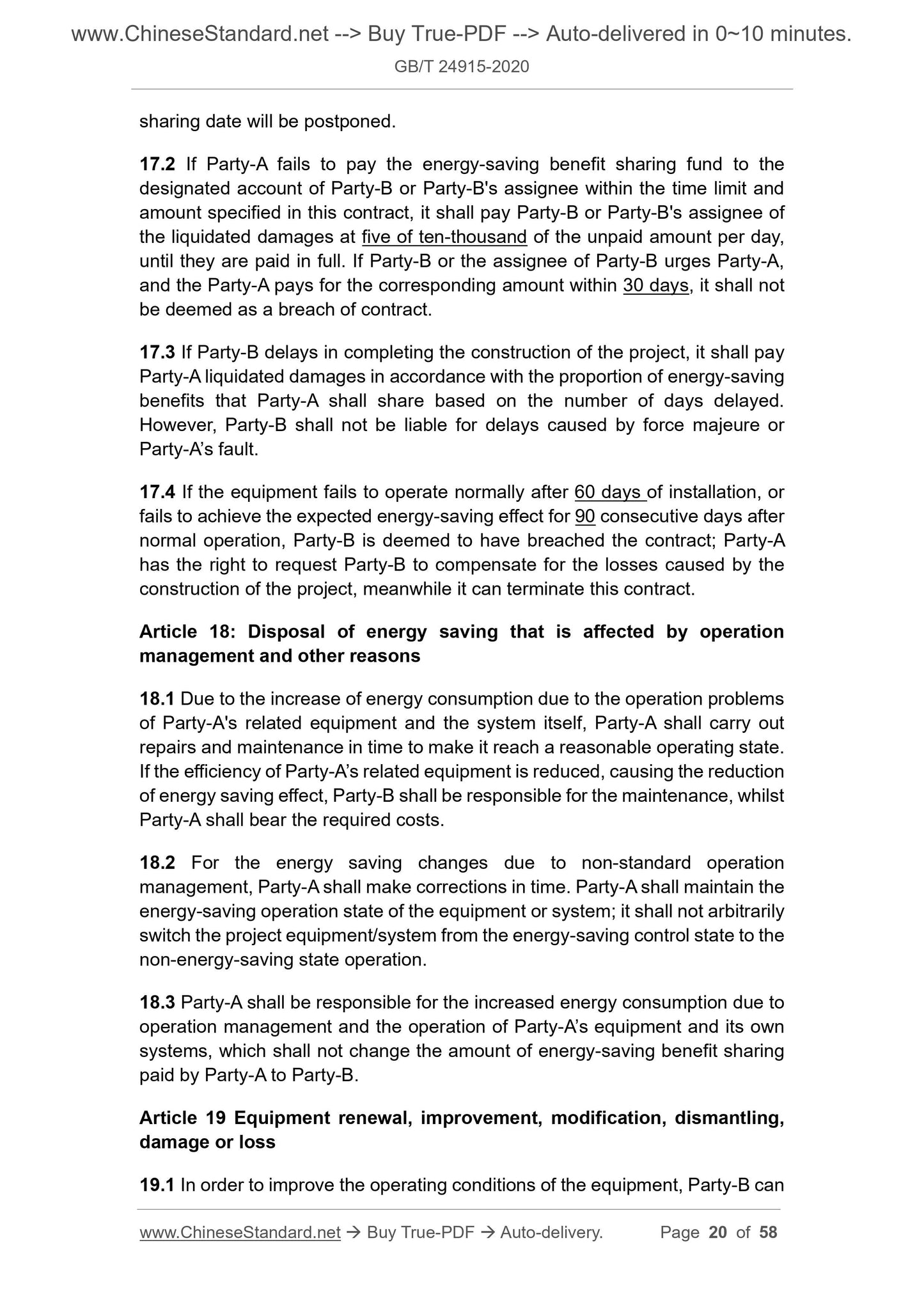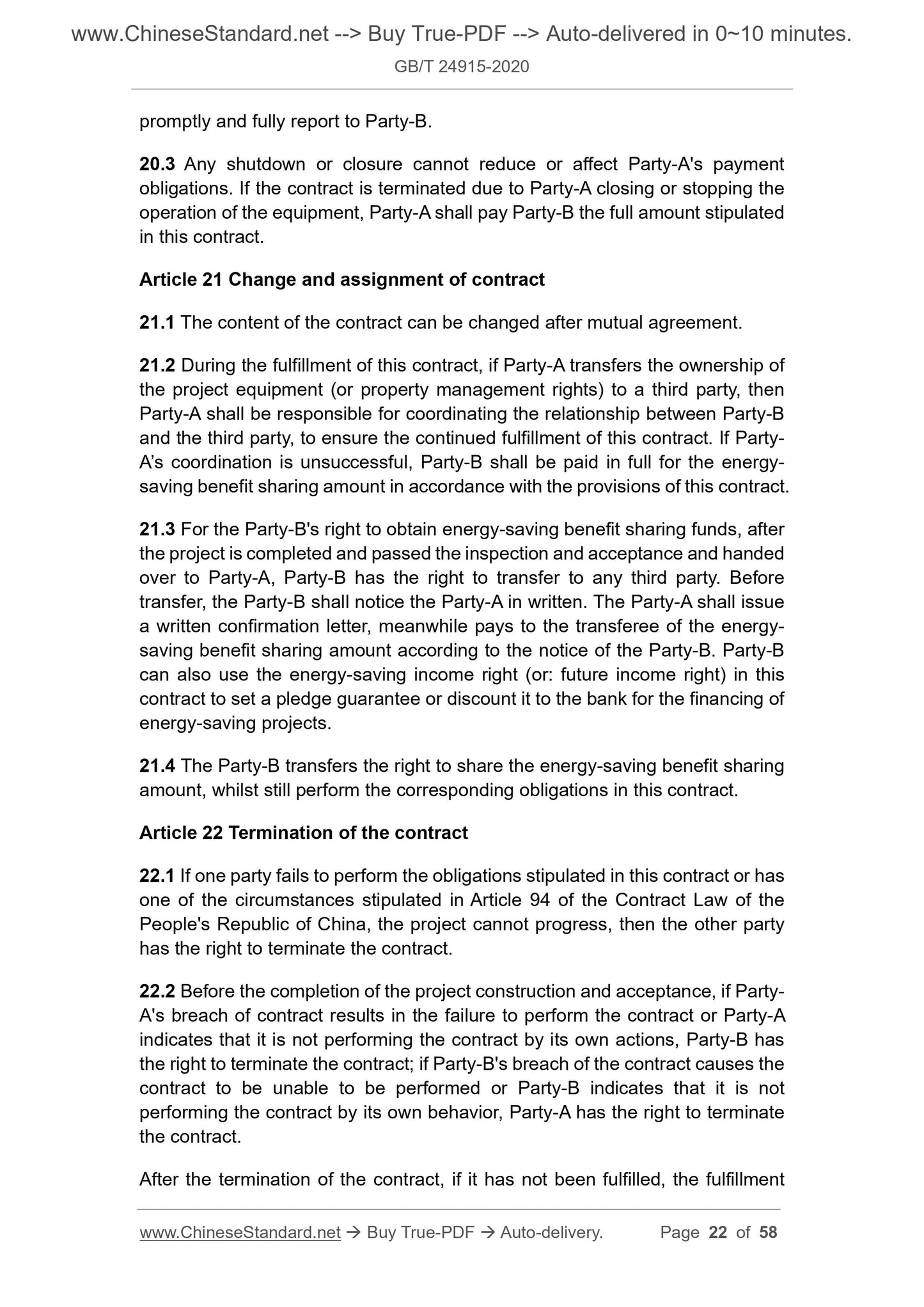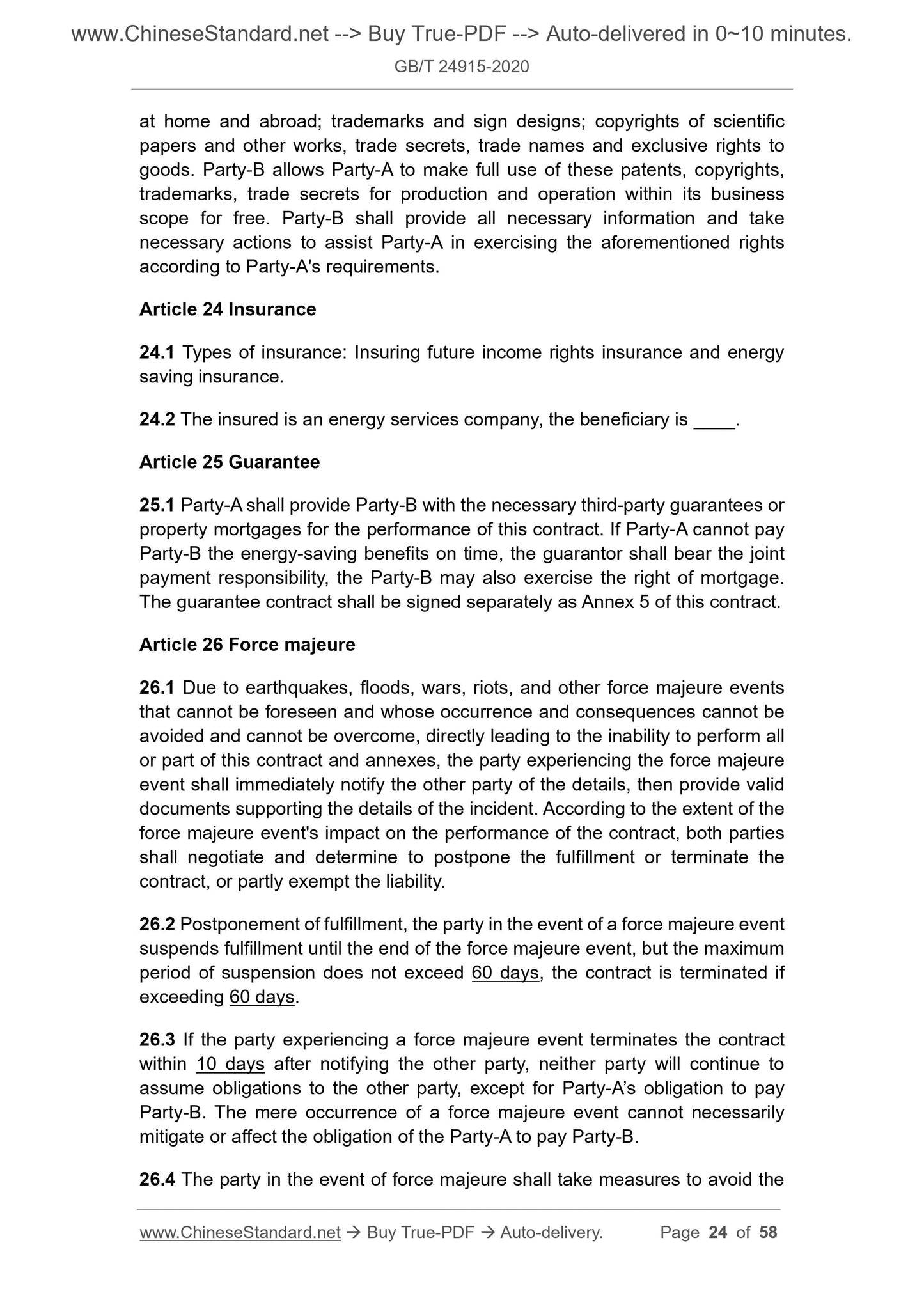1
/
of
12
www.ChineseStandard.us -- Field Test Asia Pte. Ltd.
GB/T 24915-2020 English PDF (GB/T24915-2020)
GB/T 24915-2020 English PDF (GB/T24915-2020)
Regular price
$435.00
Regular price
Sale price
$435.00
Unit price
/
per
Shipping calculated at checkout.
Couldn't load pickup availability
GB/T 24915-2020: Guidance on energy performance contracting
Delivery: 9 seconds. Download (and Email) true-PDF + Invoice.Get Quotation: Click GB/T 24915-2020 (Self-service in 1-minute)
Newer / historical versions: GB/T 24915-2020
Preview True-PDF
Scope
This standard specifies the technical requirements and contract text for energyperformance contracting.
This standard applies to the implementation of energy performance contracting
projects.
Basic Data
| Standard ID | GB/T 24915-2020 (GB/T24915-2020) |
| Description (Translated English) | Guidance on energy performance contracting |
| Sector / Industry | National Standard (Recommended) |
| Classification of Chinese Standard | F01 |
| Classification of International Standard | 27.010 |
| Word Count Estimation | 29,295 |
| Date of Issue | 2020-03-31 |
| Date of Implementation | 2020-10-01 |
| Issuing agency(ies) | State Administration for Market Regulation, China National Standardization Administration |
Share
